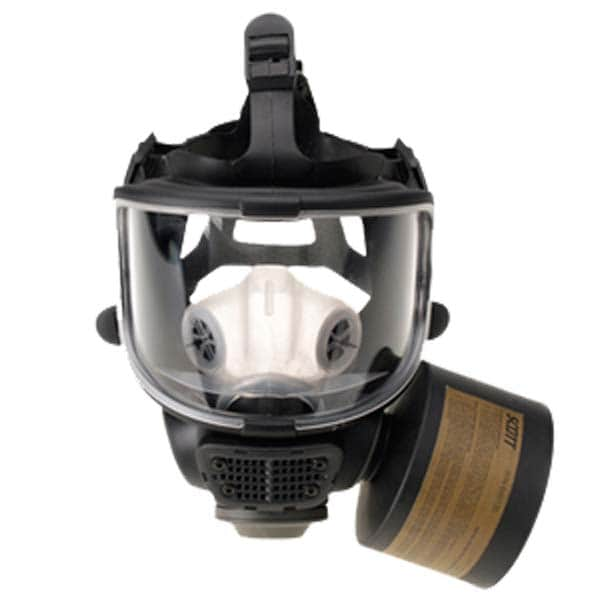Air-Purifying Respirators
Air-purifying respirators consist of a facepiece and an air-purifying device, which is either a removable component of the facepiece or an air-purifying apparatus worn on a body harness and attached to the facepiece by a corrugated breathing hose. Air-purifying respirators selectively remove specific airborne contaminants (particulates, gases, vapors, fumes) from ambient air by filtration, absorption, adsorption, or chemical reactions. They are approved for use in atmospheres containing specific chemicals up to designated concentrations, and not for IDLH atmospheres.

Air-purifying respirators have limited use at hazardous waste sites and can be used only when the ambient atmosphere contains sufficient oxygen (19.5 percent) (30 CFR Part 11.90[a]). Air-purifying respirators usually operate only in the negative-pressure mode except for powered air-purifying respirators (PAPRs) which maintain a positive facepiece pressure (except at maximal breathing rates). There are three types of air-purifying devices: (1) particulate filters; (2) cartridges and canisters, which contain sorbents for specific gases and vapors; and (3) combination devices. Their efficiencies vary considerably even for closely related materials. Cartridges usually attach directly to the respirator facepiece. The larger-volume canisters attach to the chin of the facepiece or are carried with a harness and attached to the facepiece by a breathing tube. Combination canisters and cartridges contain layers of different sorbent materials and remove multiple chemicals or multiple classes of chemicals from the ambient air. Though approved against more than one substance, these canisters and cartridges are tested or more substances has not been demonstrated. Filters may also be combined with cartridges to provide additional protection against particulates. A number of standard cartridges and canisters are commercially available. They are color-coded to indicate the general chemicals or classes of chemicals against which they are effective (29 CFR Part 1910.134[g]).
Conditions that Exclude or May Exclude Use of Air-Purifying Respirators
- Oxygen deficiency.
- IDLH concentrations of specific substances.
- Entry into an unventilated or confined area where the exposure conditions have not been characterized.
- Presence or potential presence of unidentified contaminants.
- Contaminant concentrations are unknown or exceed designated maximum use concentration(s).
- Identified gases or vapors have inadequate warning properties and the sorbent service life is not known and the unit has no end-of-service-life (ESLI) indicator.
- High relative humidity (may reduce the protection offered by the sorbent).

